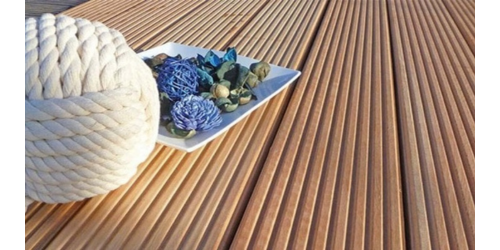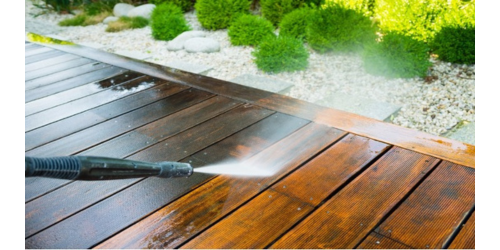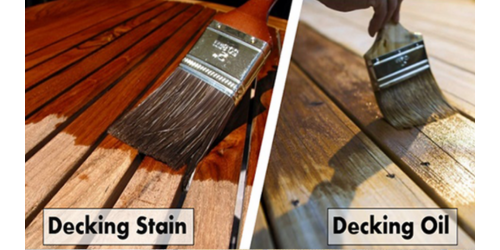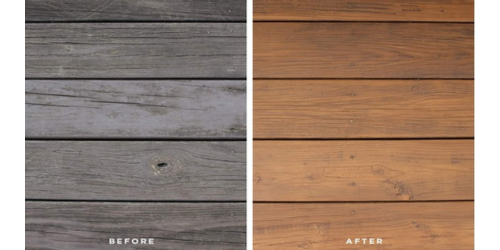Treating your timber decking – what to remember
Last updated on 24/05/2023
Appearance isn’t everything, but when it comes to your timber decking, it goes a long way. Since you last checked how the garden was doing, your deck has more than likely changed. It may have become discoloured, disfigured, and dull. Timber decking has a long lifespan, but only if you treat it correctly. This guide will show you how to prepare and apply a treatment that will preserve and protect your decking for years to come.

Preparation
If you have previously stained or painted your decking then removing any pre-existing coats will allow you to start afresh. A general clean of the timber, disposing of any dust, dirt, or debris, is recommended so as to not inhibit the application of stain or oil. This is best done using a pressure washer or you can use a stiff garden brush.
A decking cleaner may be necessary if your decking is aged and looks a little worse for wear. Even if your decking is new, it will require some level of preparation. A simple hose down with some light brushing will suffice.
Newly laid decking timber is pre-treated so once installed we recommend you allow it to naturally weather for 2-4 months prior to treatment. This will ensure that any pre-existing treatment will have been eroded, giving you a clean slate to oil or stain your deck.
Finding a dry spell of weather in the forecast is important finally. For treatment to work it needs an uninterrupted dry spell to allow it to fully saturate into the timber. Similar to painting your fence or shed, you need temperatures above 10C.

Treatment
The main options lie within two categories: stain or oil. According to the experts at Ronseal, decking oil is durable and easy to maintain meaning you just need to keep it clean and touch it up every once in a while. It is also very resistant to dirt and water so requires little maintenance.
It has the added benefit of protecting against rain and sunshine, so it is less likely to weather and grey over time. Decking oil is deep penetrating so will not impact the surface texture. Oils come in natural wood colours and are perfect if you desire that natural look, allowing the grain to stand out front and centre. Ronseal’s Ultimate Protection Decking Oil will ensure you are fully protected all year round.
Decking stains are similar to varnish and comes in a variety of colours. Stains are more similar to sealants. They do not penetrate deep into the deck like oils do. Instead, they seal the timber from the weather while providing the same level of protection against rot and greying.
Stains are highly durable against footfall, however because of their surface nature, can become slippery in wet conditions. Additionally, they are prone to peeling and flaking compared to decking oil.
They also cover up the natural woodgrain. If you seek a natural look then oiling your timber is best for you. Sadolin’s Classic All Purpose Woodstain comes in a range of colours and is ideal for decking and other exterior wood.

Aftercare
Regularly cleaning your decking will not only keep it looking good, but it’ll keep it in a good condition too. Use a stiff brush to remove dirt, grime, dust, algae, mildew and anything else that ruins the aesthetic of your deck.
If you notice any deterioration in the wood then apply additional coats. It is best to sand down the affected area first, wiping away any dust produced during the sanding process. Inspect the finish on an annual basis and reapply your oil or stain accordingly.

This guide should get you well on your way to having a durable and robust deck that will not diminish over time and will be practical all year round.
We have both timber and composite decking available and you can view that here. We also have wood stains and oils on offer, you can view those here.
Back To Blog